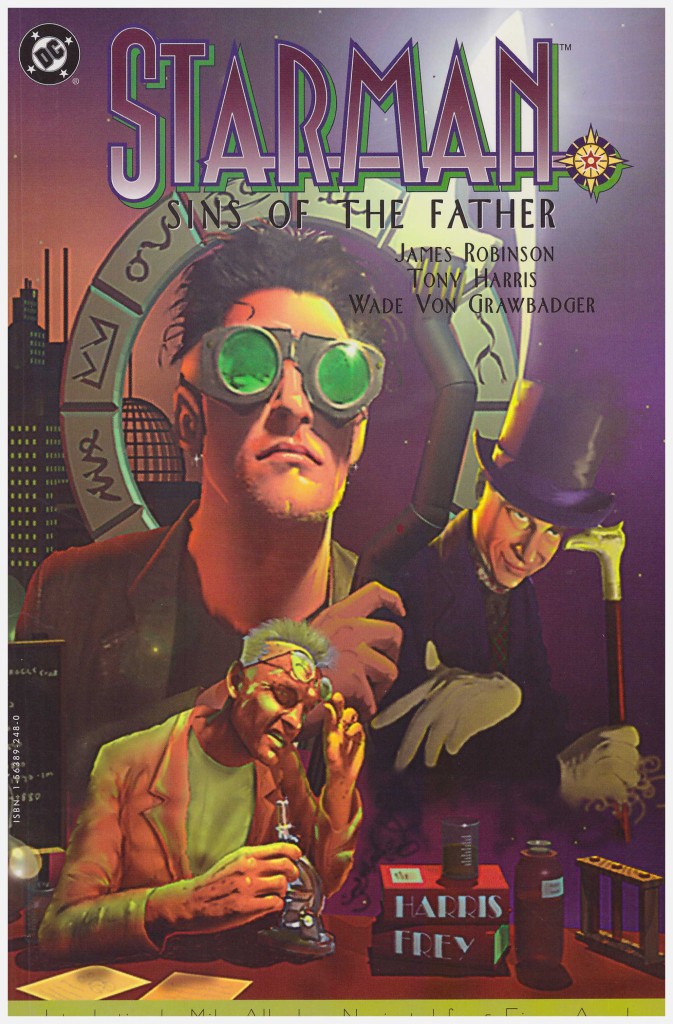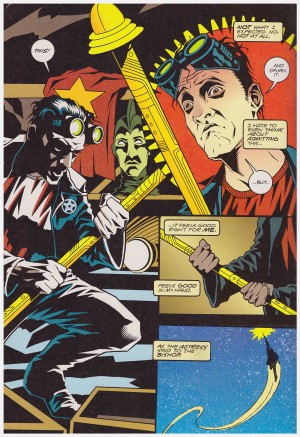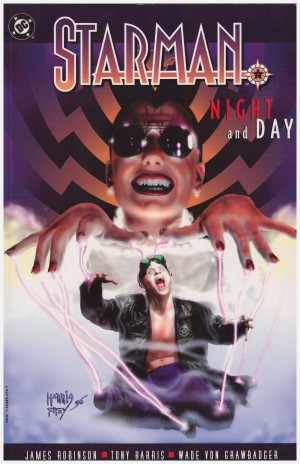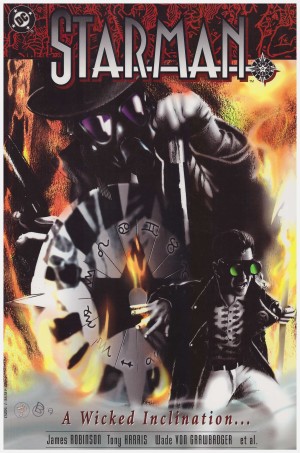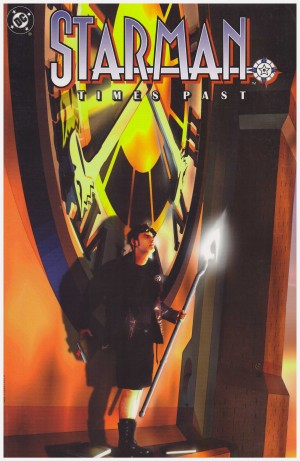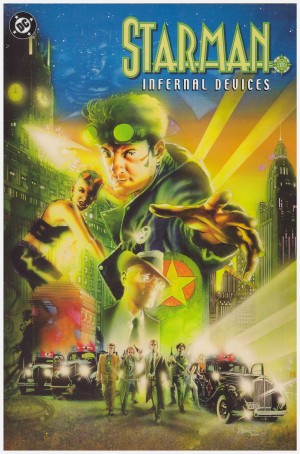Review by Frank Plowright
Let’s begin with some perspective. The foundations of the current day DC universe date back to the 1950s, and their success then in re-formatting their 1940s heroes for a modern audience. It was a trick they attempted to repeat again and again in the following decades, and Starman was the first re-boot in almost forty years that succeeded. The formula might seem simple – good writing, engaging character, good art – but no-one else had pulled it off.
In the 1940s Starman was a relatively minor character who had a five year run in an anthology title, but never really took off when revived as was. Ted Knight had a bright red costume with a distinctive stylish finned helmet and a cosmic rod that drew power from the stars. In practice he was a less imaginative Green Lantern.
Writer James Robinson was respectful to Ted Knight in writing a comic about his son Jack. Indeed, Robinson was respectful when it came to every otherwise unconnected hero DC had launched with the Starman name in the intervening years. They all feature at some point during the series, and the first has a cameo here, followed up in Night and Day.
Jack Knight owns a collectibles shop, and entirely lacks his brother’s interest in continuing their father’s heroic legacy. He comes over as a bit of a dick, in fact. Deliberately so. Yet Robinson builds a convincing world around him, with convincing supporting characters key. Robinson introduces the vast O’Dare family, law enforcement officials all, but with greatly differing personalities. He’s not quite as successful in forging an internecine rivalry with the family of the Mist, the closest the older Starman had to an arch-enemy. There are some nice character touches here, particularly the Mist’s unrepentant unpleasantness, but the motivations prompting his daughter to continue his legacy don’t entirely convince.
A person who does is the Shade. As a villain he’d formerly plagued the Flash. Robinson completely reworks him as an arch-intellectual whose odd darkness inducing abilities stretch back over a century, and who dabbled in villainy to amuse himself. He plays a pivotal role, and will become ever more fascinating as the series evolves.
Equally important was the look of Opal City, where Starman operates. Here artist Tony Harris comes into his own, creating a skyscape of beauty and wonder, and art-deco styled buildings by the dozen. His design for Jack Knight also impresses, with night goggles, the cosmic rod remodelled as a staff and decorated leather jacket forming his costume, or lack of. It’s a solid, and timeless, look. While the designs and layouts are fantastic, there’s a stiffness and posed quality to Harris’ figures, and that’s never entirely lost.
Robinson begins and ends this introductory volume with a surprise involving David Knight, Jack’s brother, and the ending is reprised throughout the succeeding books to good effect. This ties into a theme of the series, not obvious here, which is growing-up. This also applies on a meta level to the creators, both of whom are vastly improved when their contributions end.
Starman was a startling series when introduced, and the elements that combined to make it successful are all here, but it’s a series that improved as Robinson had the confidence to let his imagination fly.
DC have since re-formatted the Starman material into a series of Omnibus editions, to which there are pros and cons. They collect issues missed from the paperback collections, but an insistence on presentation in strict publication order renews the frustrations of the original series, when stories would be interrupted by unconnected tales.
